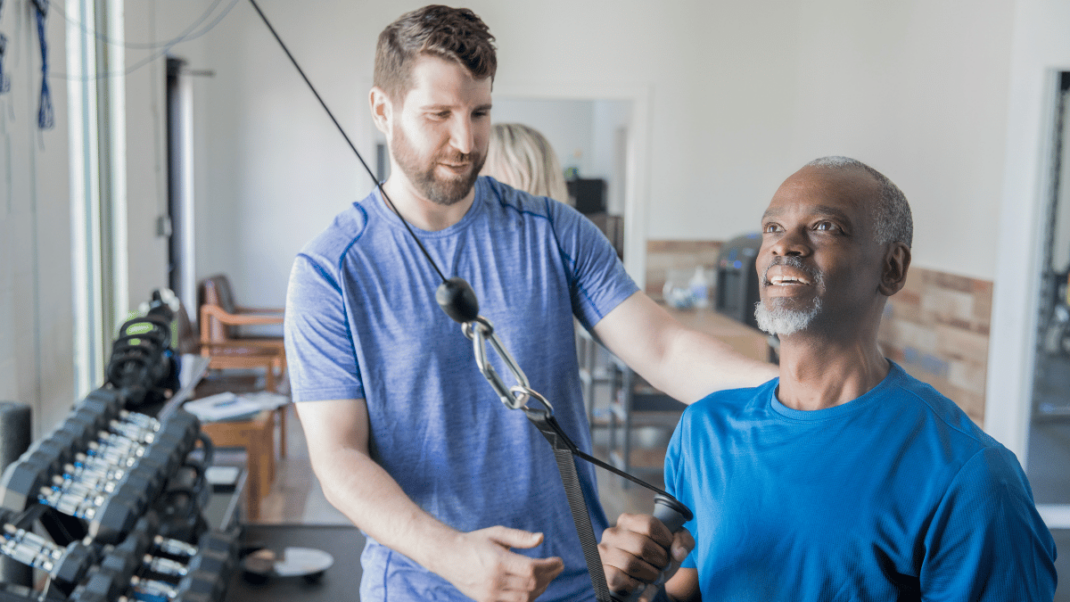Google Places and Other Online Business Directories
How to customize your online listings to gain a local, competitive edge.

In my area, for example, there are two listings for total-body boot camps at a park 5 miles from my house. However, between my house and the park, there are also eight fitness studios, three of which directly advertise boot camp services on their websites. In fact, the club located within walking distance started a new boot camp series recently. How is it that these listings do not show up in Google Maps, one of the world’s largest search engines and online business directories?
Fitness professionals and health clubs can gain a considerable advantage by claiming control of their listings on popular online business directories. By reframing their information, they can increase the relevance of their businesses within local communities. According to a study on consumer behavior, 90% of consumers use search engines to research products or services in their local area; 48% use the electronic directory Internet Yellow Pages; and 24% use vertical sites (topic- or genre-specific search engines, such as club finder or personal trainer directories) (BIA/Kelsey and ConStat 2010).
Read on to learn about the top online business directories—from Google Places to IDEA FitnessConnect—and how you can make the most of your business listing.
“Google Places” Is Your Starting Point
Since Google Maps ranks first in presenting travel-related sites (Top 20 Sites & Engines 2010), it is crucial that your business information remain current. Google Places is a free service that club owners and fitness managers can use to gain greater control over the information that Google Maps displays about their businesses. As in most online directories, you can include photos, videos, website URLs (if you don’t have a website, include your IDEA FitnessConnect link instead!), contact numbers, hours of operation, service area and payment options. Go to www.google.com/places to claim your business—or create your listing if it is not already included on Google Maps.
What makes Google Places different from other online directories is Google’s powerful analytics. Discover how often users found your business based on their search results, how many “more info” map clicks your site got and what locations the driving-directions requests originated from. Who knows, if enough people searching for your business generate driving directions from a nearby town, you might want to consider opening a sister club at that location or expanding your services there.
Google Places is also advantageous to fitness professionals who don’t have a brick-and-mortar store. Personal trainers who train online or work with clients in their homes can still show up on Google Maps, so long as they provide cross streets and name their service area in lieu of a full address.
Although Google is a top destination for local business searches, check out other popular online business directories, such as Yellow Pages (www.yellowpages.com) and Yahoo! Local (www.local.yahoo.com). Is your listing current? Does it have all of the right information and keywords associated with it? Niche directories like IDEA FitnessConnect (www.ideafit.com/fitnessconnect) and other health club and personal training directories can also promote you to audiences specifically looking for fitness-related businesses and services.
Online Directories That Feature Customer Reviews
Customer reviews and ratings are a key component of most online directories. Authentic testimonials about products and services bring greater context to a business listing. While consumers find reviews helpful in making informed decisions about a business, for businesses it’s an opportunity to connect with current and future customers. Whether comments are negative or positive, addressing them should also be a part of managing your presence in these directories.
It’s the wealth of customer reviews that distinguishes Yelp (www.yelp.com) from other online business directories. Although Yelp has all the content of an online directory (name, contact, websites, maps), people log on to this site especially to read consumer reports and share their experiences about local businesses. Alternative directories, like Judy’s Book (www.judysbook.com) and Insider Pages (www.insiderpages.com), similarly support the customer voices of local communities.
Google Places takes reviews one step further. The site not only includes reviews written by other Google users, but also aggregates all reviews of your business from across the Web and posts them under your business listing.
Navigate Through GPS-Based Networks
Global positioning systems (GPSs) take into account a person’s location at the time of the search. A classic example would be if you use a GPS to find the nearest fitness center on your way home. The latest trends in GPS-based directories are being explored within social networking sites. Imagine stopping at the gym on your way home and disclosing your current location to your network of friends.
Social networks like Foursquare (www.foursquare.com) and Gowalla (www.gowalla.com) use a phone’s GPS to track a person’s location and share it (in real-time) with the person’s group of friends using a “check-in” application. The idea behind it is that, if a friend checks in at a gym, others may join the person there or suggest a place nearby to meet up afterward.
Business owners can leverage this data to further connect and engage with their clients and members. Since GPS-based social networks are integrated with an extensive business directory, you can research who checks into your clubs and events, how frequently they check in and what comments they post on your page after they leave. As a fitness business, being present in these directories can keep you connected to the trends and patterns of the people in your community. Imagine the insight you can gain from knowing the activities of your members—especially before they arrive at your gym and after they leave. Are they going home before or stopping at a coffee shop afterward? How might you use such data in your marketing messages?
GPS-based networking is evolving rapidly. Online business directories like Yelp and social networks like Facebook are incorporating similar location check-in features. The question is, Will your location be included?
Gone are the days when your business information would be listed in a static, local phone book. The Internet has given business owners greater control over their information. While most online directories prepopulate their databases with listings, fitness professionals must be proactive in claiming their profiles and verifying their information. If my local gym had taken the extra 5 seconds to tag the phrase boot camps in its Google Places listing, the gym might not have lost my business to its competitors down the road.
The large number of online directories, blogs, Twitter™ feeds, Facebook pages and websites makes it easy for consumers to learn about local businesses via the Web. But if Google provides that initial entry point for consumers to learn about your products and services, then how do you drive the traffic from Google Maps to your club doors and classes? These five tips may encourage this transition:
Tip 1: Add Unique Details to Make Your Listing Stand Out
People expect the standard information in a business listing: name, address, contact, website, hours of operation, amenities, etc. So why not offer a few unexpected details? For instance, instead of indicating “yes” for “Parking available?” include that you offer a bike rack for those who cycle to the club. Rather than generically listing “state-of-the art equipment,” quantify this statement to provide greater context—“40 treadmills, 12 Pilates machines,” etc.
Tip 2: Maximize the Use of Descriptions and Categories
Include your business under multiple categories, and use keywords in your description that match what your audience would commonly use in searches. For example, in IDEA FitnessConnect, you can further refine keywords by choosing specific parameters under the fields of “expertise” and “specialty.”
Tip 3: Move Online Conversations Offline
If your business listing receives any client comments or ratings, acknowledge these reviews with an online response. But also re-establish this connection offline. If a regular member raves about your fitness studio, follow up by referring to those comments at that member’s next visit. If a review is negative, invite that customer back for an opportunity to create a more welcoming experience.
Tip 4: Promote Offline Conversations Online
Close the conversation loop by encouraging clients and members to report their experiences in these online spaces. For instance, post signs on the front doors: “We’re on Yelp!” Let customers know you welcome and appreciate public feedback. These are easy ways to generate additional conversation about your business over the Web.
Tip 5: Create Coupons, Guest Passes and Special Promotions
Google Places lets you create Internet-friendly or mobile-compatible coupons directly on your listing page. IDEA FitnessConnect includes a “Request a Free Guest Pass” button on all club profiles. Foursquare lets businesses attach various incentives based on the number of check-ins to their locations.
The large number of online directories, blogs, Twitter™ feeds, Facebook pages and websites makes it easy for consumers to learn about local businesses via the Web. But if Google provides that initial entry point for consumers to learn about your products and services, then how do you drive the traffic from Google Maps to your club doors and classes? These five tips may encourage this transition:
Tip 1: Add Unique Details to Make Your Listing Stand Out
People expect the standard information in a business listing: name, address, contact, website, hours of operation, amenities, etc. So why not offer a few unexpected details? For instance, instead of indicating “yes” for “Parking available?” include that you offer a bike rack for those who cycle to the club. Rather than generically listing “state-of-the art equipment,” quantify this
References
Top 20 Sites & Engines (as of 11/6/2010). www.hitwise.com/us/datacenter/main/dashboard-10133.html; retrieved Nov. 20, 2010.
Biray Alsac, MS
Biray Alsac, MS, is the owner of FITTmaxx Institute, a consulting company for health organizations and fitness/wellness professionals interested in learning how to integrate Web-based tools and interactive technologies (exergames) into their programming. She holds a masterÔÇÖs degree in exercise and wellness. Certification: ACE Education provider for: ACE





